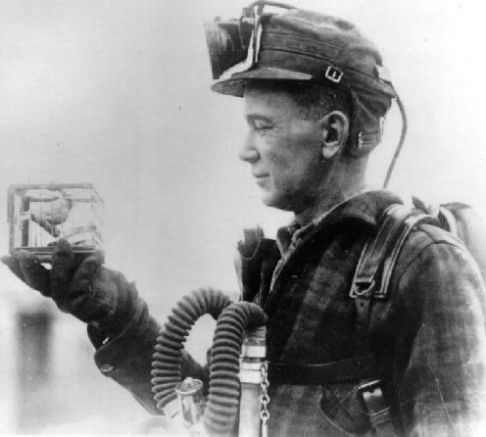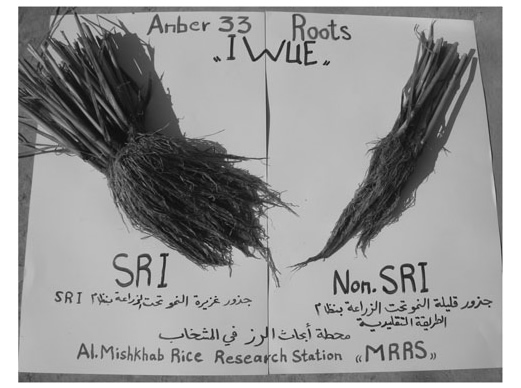There exists a school of thought in the art world that anything can be art, because the artist’s designation of the object as “art” changes our perception of it; therefore, it no longer exists in its original state, but has been irrevocably changed. This concept, called found art, is interesting in that it challenges the extreme boundaries of our abstract perception of art. In found art’s first and perhaps most famous instance, Marcel Duchamp’s collection of “ready-mades” was highlighted in 1917 by his piece Fountain, a standard urinal bought at a hardware store and lain down on a pedestal. The fact that we viewed it as art, effectively that we now used it as art, was what made it art, he argued.
Starting years before Fountain and extending well into the late-20th century, canaries were used in coal mines to detect rising levels of carbon monoxide and other toxic gases before humans were affected, giving them time to evacuate or don gas masks. The gases could easily build up in mine shafts, and since canaries are more susceptible, they would succumb before the miners began to feel any adverse effects. From 1911 to 1986, any coal mining pit in Great Britain was required to have at least two canaries in it.
But would you call the canary a biosensor?
The use of canaries as an indicator for hazardous gas concentration is really not so different from Duchamp’s urinal. Both stand astride the line between two abstract classifications: that of their original purpose, and that of their new use. Is Duchamp’s urinal art because he classified it as such? Is it art because he removed it from its original purpose’s setting and brought it into an art gallery? By laying it down and placing it on a pedestal, did he alter it enough that it became art then? If he had walked into the art gallery’s bathroom, pointed at a urinal there, and said, “I call this piece Fountain,” would that too have become art?
It’s a dicey thing to argue no matter which stance you take. But conduct a thought experiment. Think about your answer to the questions just above regarding Fountain, and now think about the chipper yellow bird twittering in a dark mine shaft. Is this canary a biosensor because we classify it as such? Is it a biosensor because we removed it from its original purpose’s setting and brought it into a mine? By thrusting it into a cage and hanging it on a hook, was it altered enough that it became a biosensor then? If we clambered out of the tunnel back into daylight, strode over to the nearest tree, pointed up at a canary there, and said, “I call this a biosensor for carbon monoxide levels,” would that one too have become a biosensor?
There are other examples with easy compromises with which we may wriggle out of the above thought experiment. For example, it was determined in the 1950s when searching out likely spots for uranium ore deposits that certain deep-rooted plants like juniper have the ability to carry uranium from underground ore deposits all the way to the growing tips. Samples from these plants were taken back to labs, ashed, and analyzed fluorimetrically for abnormal uranium levels. Environmental uranium detection has since been updated with better technology and now-relevant situations; in a recent paper published in the Journal of Environmental Radioactivity, researchers grew uranium-sensitive plants in varying levels of toxically radioactive soil, took root samples, pressed them, and analyzed the roots for absorbed uranium by UV-Vis spectrometry. Question is, are the plants biosensors, as they’re the object actually sensing the uranium? Are the UV-Vis spectrometers the biosensors, as they’re the part feeding data into the computer? It’s easy to say the spectrometers are sensing ecological radiation levels and call the problem solved. But what if the scientists had grown plants under a range of soil radioactivity and then measured the stunted growth of the plants? There’s no technological black box to pin the “biosensor” label on, but soil uranium levels are being sensed nonetheless.
I would argue that the plants themselves are the biosensing components, and the spectrometers used to quantify the roots’ radioactivity are analysis components in an overall biosensing system of plant/spectrometer/computer screen. But that’s just me. I hold that nature is wonderful but never sacred. We shouldn’t think ourselves above it, but neither should we ever hold it above us as inviolate, something to be appreciated and not used to our own ends.
Science has indicator species, art has found art… Let it never be said that art and science are foreign forces in anything but nomenclature.


![A farmer weeds his field according to SRI protocol. Note the wide spacing of individual plants, and the relatively low water level. [Source: Wikipedia]](https://naturemimickingnature.files.wordpress.com/2013/02/1024px-weeding51.jpg?w=640&h=480)
